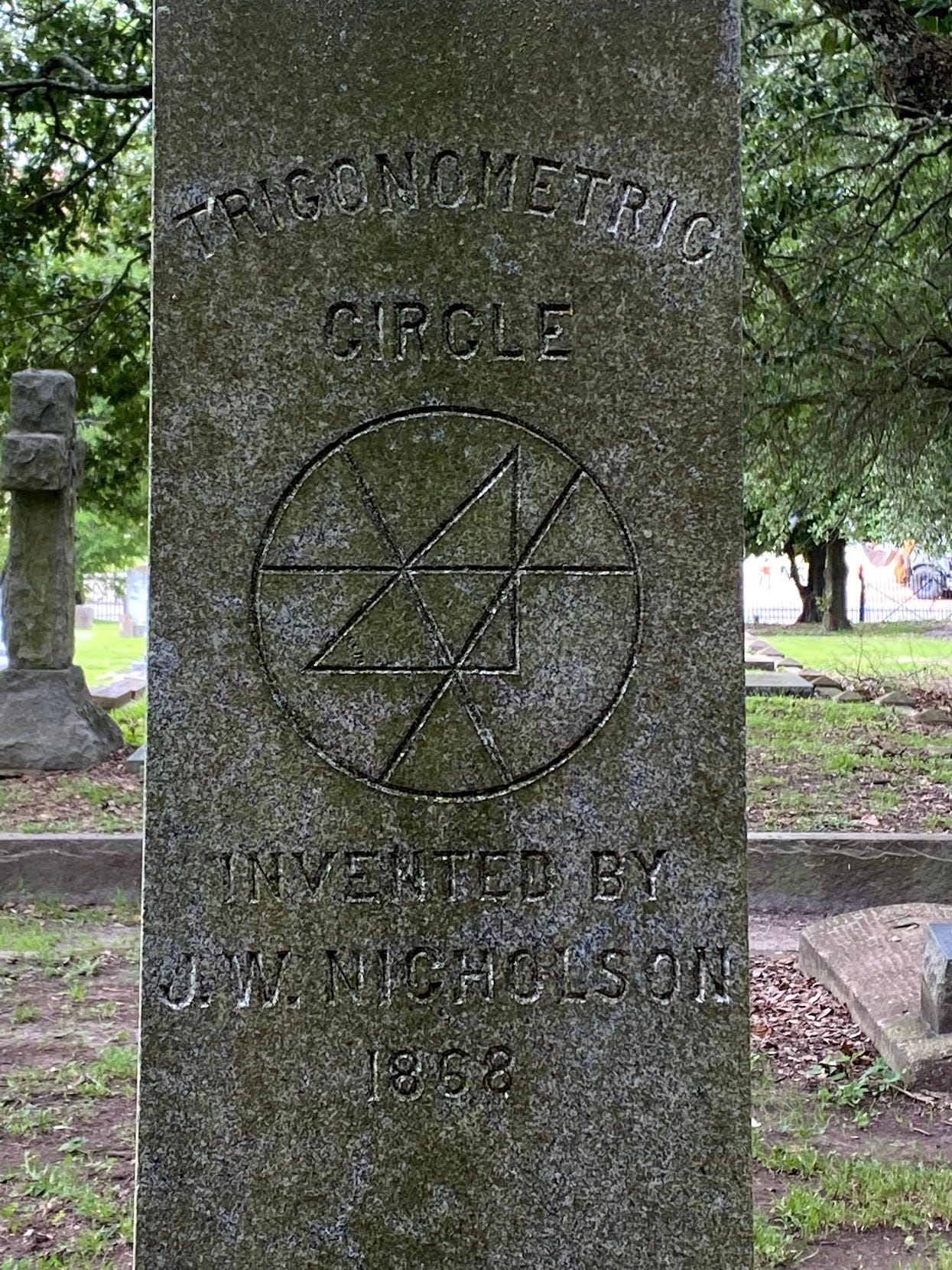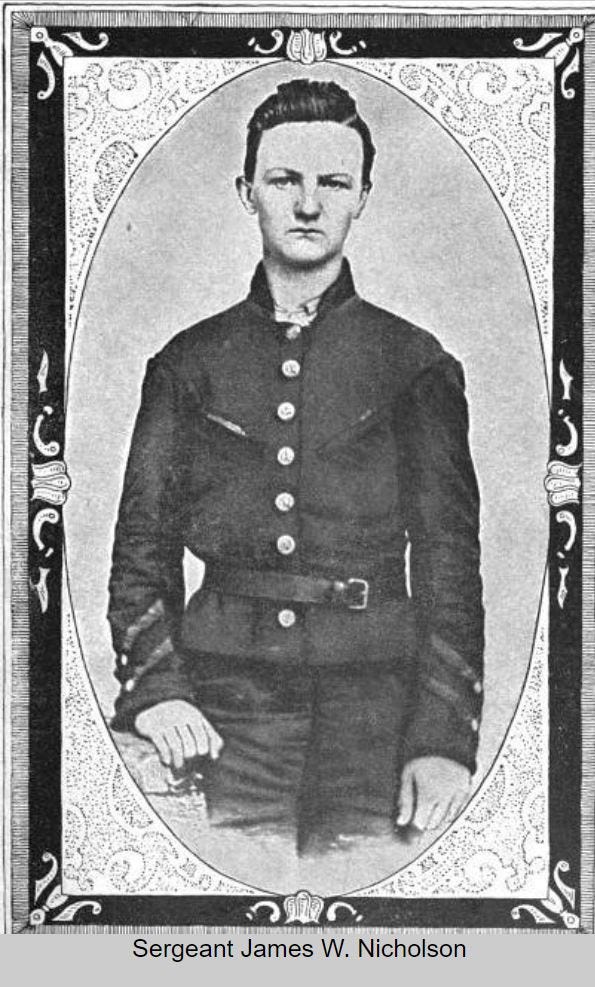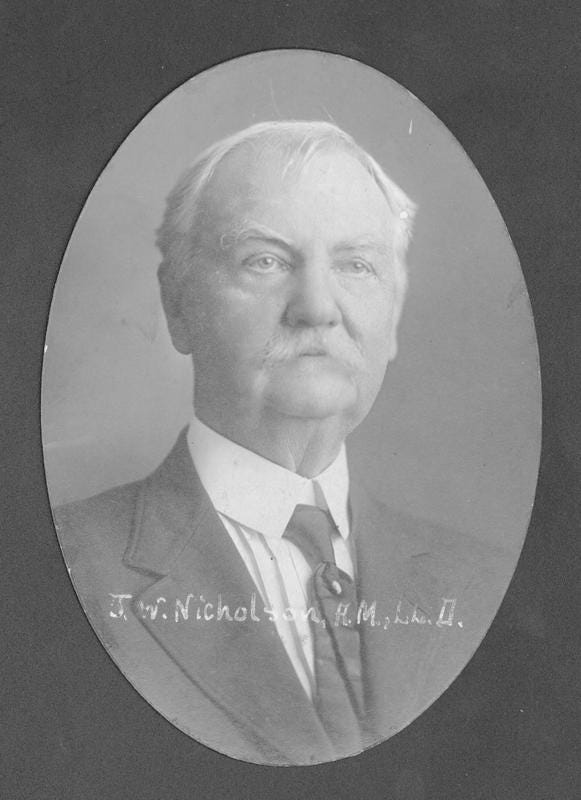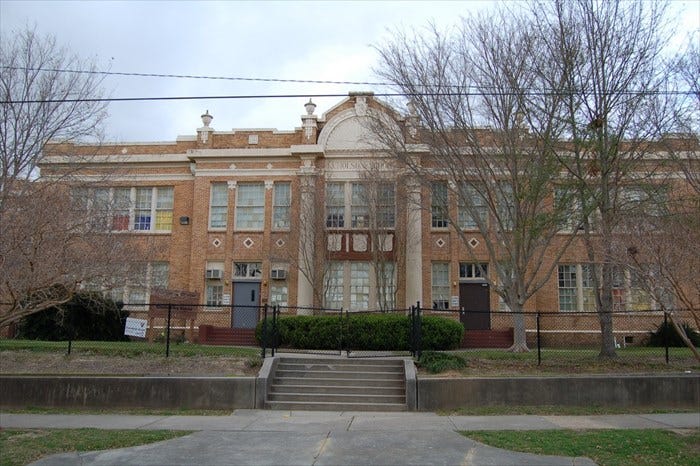The dead are not silent. No, this isn’t a ghost story. This is a story about legacy. The dead speak through the physical things they leave behind. For this reason, cemeteries are full of stories. Walking through the historic Magnolia Cemetery, the elaborate headstones call out to its living visitors.
On Sunday we stopped by to escape the relentless heat that was draining our energy during our pre-brunch ride. We took advantage of the share and spent the time looking at the Woodsmen of the World headstone. Magnolia Cemetery is littered with them. But that’s not what caught my true interest. Instead, it was a large obelisk with the words “Trigonometric Circle” at the top and “Invented by J.W. Nicholson 1868” below it.
“Invented by” are two words not often seen on a cemetery headstone.
“I bet that’s who Nicholson Road is named after,” said Drew Walker, a regular of the Downtown East Social Ride.
Hot damn he was right! Col. James William Nicholson was not only a brilliant mathematician, but he was the president of LSU for roughly a decade.
A biography published in 1894 by The American Mathematical Monthly described Nicholson as having a “magnetic nature” that “draws hearts to him” and “there are few among either pupils or associates who do not esteem him as a friend.”
That biography paints a picture of not only a well-loved man, but a brilliant one.
“Colonel Nicholson's early training was largely under the guidance of Prof. J. W. Boring, who prepared him for his admission to the freshman class of Homer college at the age of fourteen years.
“Even during his preparatory course he had shown a strong preference for the study of mathematics, and a singular aptitude in the mastery of its principles.
“The usual methods of solution and a demonstration served to merely stimulate him to search for new and unusual methods of reaching the same results. It is said that he never received any aid in the solution of a mathematical question, nor a single demerit for misconduct, while at college.”
His finally year of college was just before the Civil War. Tensions, obviously, were high. By the time he was 17-years-old, he was part of the battle.
“He entered the confederate army in 1861 as a private in Company B, Twelfth Louisiana infantry, under Col. Thomas M. Scott, and served without interruption until the close of the war, and until surrendered at Greensboro, N. C., only twenty-three days less than four years from the date of his enlistment.”
Long after the war, Nicholson become a professor of mathematics at LSU and he quickly garnered attention for his work in the field.
“As already intimated he has an independent, inventive and progressive mind, always more disposed to invent new methods than to passively follow old ones, and as a consequence he has extended in several lines of first importance the scope of mathematical inquiry, and his merit has been recognized by the foremost mathematicians of the world. He is a member of the London Mathematical society (England), and also of the Mathematical society of New York.”
If you want someone to explain his work, well, you’re not going to get those answers here. What I can tell you, however, is that his distinction of Colonel came when he became the president of LSU, because the university is a military school.
Of course, today there’s a building on the campus named after Col. Nicholson, but interestingly enough, he never served as president over the current location of the campus. Instead, he reigned when the university was located in downtown Baton Rouge and classes were held in the pentagon barracks.
LSU took over that location in 1886 and remained there until moving to its current location in 1926. The building bearing Nicholson’s name was constructed in 1937. The building houses the Department of Physics & Astronomy. I had a class there once, it’s rather nice!
If you’re keeping count, that means there’s a road and a building named after him. But wait! That’s not all!
Nicholson Elementary school located IN DOWNTOWN EAST on North Street is named after him, too. The brick architecture is familiar for many of the schools in the area because they were all built during the 1920s. And the cost wasn’t cheap. It was just under a million dollars by today’s standards.
Education was really booming during this time in Baton Rouge history. The Nicholson School was considered one of its crown jewels.
According to one of those “way back when” articles published in The Advocate, the Nicholson School was called the “little college,” because it had such high standards.
His name also is associated with awards and scholarships. His greatest legacy, arguably, was his family. A father of five children, Gordon, Lilburne, Malcolm Dudley, Wilber Fenner and Annie; and husband to his beloved wife, Sallie Baker.
“In all this he holds the noblest of all possessions, a brave, intelligent and trusting wife, whose sympathy and encouragement is a constant incentive to him to work on, to penetrate still deeper in the hidden mysteries of his laborious Science.”
This graveyard tale is one that isn’t too hard to find. But what happens when you have no children to pass down your name, no job that holds you in high esteem, and certainly no reputation that is worthy of literary publication? Well, then maybe you’re forgotten. Or maybe 100 years after your death some girl will take such an interest in your name and she will create an entire life for you.
Want to hear that story? Well, you’ll have to wait. That will be in the next issue of this newsletter.
Thanks so much for subscribing! If you liked this, please tell your friends. And if you have a suggestion for a story you think I should tell, send it to me at samanthamorganmedia@gmail.com.
References used for this story:
https://louisianadigitallibrary.org/islandora/object/lsu-ua-uap%3A206
https://www.jstor.org/stable/2967759?seq=6#metadata_info_tab_contents
https://www.lsu.edu/physics/about/nicholson-hall.php
https://louisianadigitallibrary.org/islandora/object/lsu-ua-uap%3A206









Good story, Sam. Looking forward to the next one.
Real nice presentation of the many dimensions to Col Nicholson. The fact your mother taught in
Nicholson for her many outstanding years in the Speech and Communications Department adds a
special interest level in his story for me.